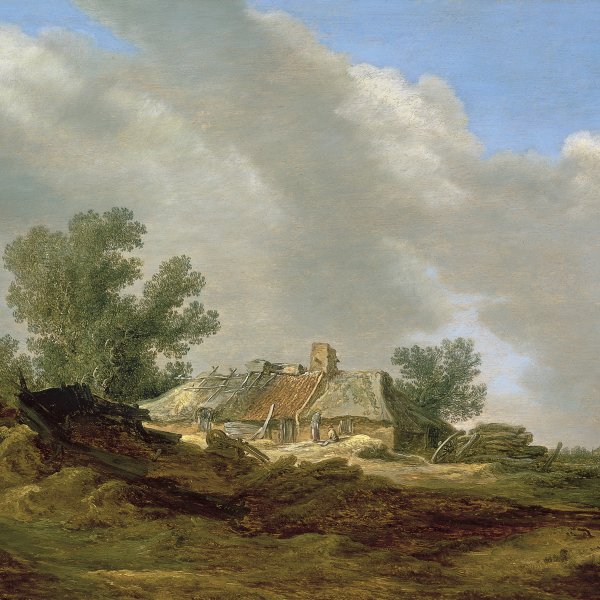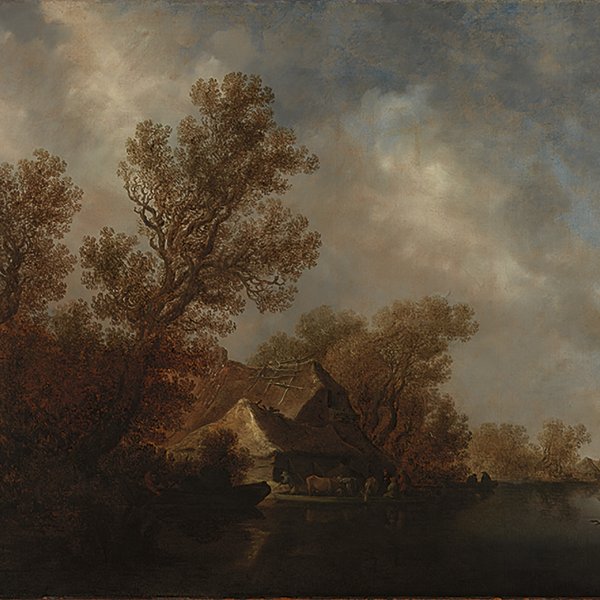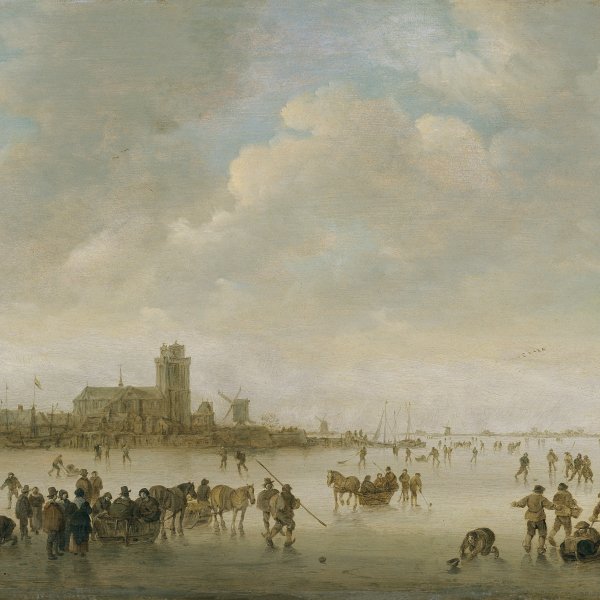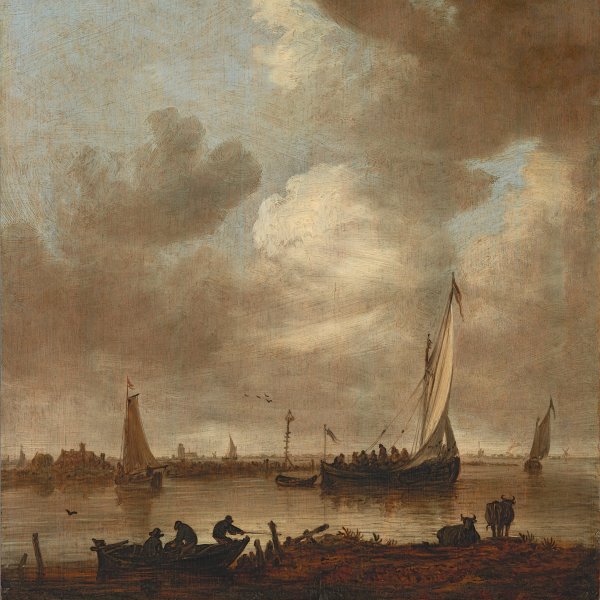Jan Josephsz. van Goyen
Leiden, 1596-The Hague, 1656
Van Goyen was a Dutch painter who specialised in landscapes and marine views. The son of a cobbler from Leiden, Van Goyen studied in his native city in the studios of Coenraet van Schilperoort, Isaac van Swanenburgh, Jan de Man and Hendrick Clock. He also studied in Hoorn in the studio of Willem Gerritsz. In 1615 he travelled to France and worked there, returning to Haarlem the following year where he is documented in the studio of the painter Esaias van de Velde. In 1618 Van Goyen married Annetje Willemsdr. van Raelst in Leiden.
His earliest works reveal the marked influence of his teacher Esaias van de Velde. Around 1627 Van Goyen, along with other painters such as Salomon van Ruysdael, Pieter de Molijn and Pieter Dircksz. van Santvoort, developed a new style that would be known as “tonal”, in which the landscape is treated in a direct, realistic manner. These artists produced simple local views painted in natural colours using a limited palette of browns, ochres and greens and in which most emphasis is given to the atmospheric effects.
In 1632 Van Goyen settled in The Hague, and became a citizen two years later. He worked as an art dealer and in the tulip business, which resulted in enormous financial losses for the artist in 1637. In 1638 and 1640 Van Goyen held the office of dean of the guild of Saint Luke in The Hague. Over the next few years he travelled around the Low Countries and Germany, producing large numbers of drawings of the places he visited. In 1649 two of his daughters married the painters Jacques de Claeuw and Jan Steen, who was also Van Goyen’s pupil.
Towards the end of his career, in 1651, Van Goyen secured two public commissions: a panoramic view of The Hague for the Town Hall of the city, and a landscape of the region of Burgundy for the royal palace at Honselaersdijk. In 1652 and 1654 documents state that Van Goyen’s possessions were sold at public auction, probably to pay the artist’s debts. He died in The Hague in 1656, leaving so many debts that his widow was obliged to auction the rest of his goods.
His earliest works reveal the marked influence of his teacher Esaias van de Velde. Around 1627 Van Goyen, along with other painters such as Salomon van Ruysdael, Pieter de Molijn and Pieter Dircksz. van Santvoort, developed a new style that would be known as “tonal”, in which the landscape is treated in a direct, realistic manner. These artists produced simple local views painted in natural colours using a limited palette of browns, ochres and greens and in which most emphasis is given to the atmospheric effects.
In 1632 Van Goyen settled in The Hague, and became a citizen two years later. He worked as an art dealer and in the tulip business, which resulted in enormous financial losses for the artist in 1637. In 1638 and 1640 Van Goyen held the office of dean of the guild of Saint Luke in The Hague. Over the next few years he travelled around the Low Countries and Germany, producing large numbers of drawings of the places he visited. In 1649 two of his daughters married the painters Jacques de Claeuw and Jan Steen, who was also Van Goyen’s pupil.
Towards the end of his career, in 1651, Van Goyen secured two public commissions: a panoramic view of The Hague for the Town Hall of the city, and a landscape of the region of Burgundy for the royal palace at Honselaersdijk. In 1652 and 1654 documents state that Van Goyen’s possessions were sold at public auction, probably to pay the artist’s debts. He died in The Hague in 1656, leaving so many debts that his widow was obliged to auction the rest of his goods.








